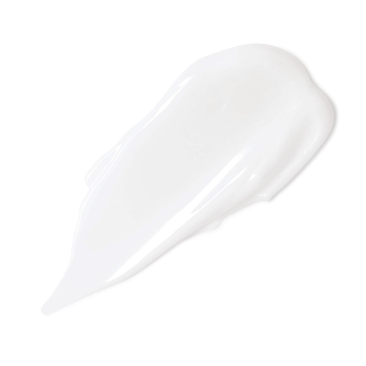Just like music, perfumes are composed of different notes. Mastering what fragrance notes are and how they work is key for any fragrance enthusiast. By understanding fragrance notes well, you can always find the perfect scent. Not only for yourself, but certainly also for your partner if you know what he or she likes. In this article, we explain everything about the differences between top, heart, and base notes and within which fragrance families these combinations fall.
What are fragrance notes in fragrance?
Fragrance notes are the different scent layers in a fragrance that together form a wonderfully fragrant whole. These layers are divided into three different fragrance notes: the top notes, heart notes, and base notes. Together, these three layers create a fragrance whose scent continues to develop from start to finish as you wear it. You may have noticed that a fragrance does not smell the same all day. This is because each layer is based on the speed at which a scent evaporates. A good perfumer, therefore, plays with these three notes to create a unique composition, just as a musician does with music.
Top notes: the first impression
The top notes of a fragrance are also called opening notes and provide the first impression. As soon as you spray a eau de parfum, it opens with the top notes. This layer is the lightest of the three fragrance notes but is the most dominant scent in the first few minutes up to about an hour. Top notes consist of the most volatile molecules in a fragrance and linger only very temporarily. To properly assess a fragrance, you cannot judge it immediately in the first few minutes, as it may be that the top notes do not appeal to you, but the heart of a fragrance is exactly what you are looking for.
Typical top notes are citrus scents (bergamot, lemon, orange), light fruits (apple, blackberries, pineapple), and green/aromatic herbs (basil, thyme, lavender).
Heart notes: the heart of a fragrance
When the top notes are softening, the heart notes emerge. This layer gives a fragrance its character and forms the heart of a fragrance. Heart notes are the most important element in a fragrance, they extend the freshness of the top notes and add warmth to the base notes. It is not surprising that this layer determines about 40-80% of the final scent. Heart notes typically last 4 to 6 hours. The heart of a fragrance must be pleasant and balanced.
Popular heart notes are flowers (jasmine, rose, and neroli), leather, tobacco, and spices such as nutmeg and cinnamon.
Base notes: the soul of a fragrance
Base notes are the last layer in a fragrance and give a fragrance warmth and depth. After all other fragrance notes have disappeared, you can sometimes still smell the base notes for days. It is not surprising that base notes are called the soul of a fragrance. They provide the memory of a scent and the moment you wore it. Base notes have the task of giving a long-lasting impression. For example, when you put on your coat after applying fragrance and you can still smell the scent the next day.
Typical base notes are woods (sandalwood, oudh, and cedarwood), resins (amber, benzoin, and labdanum), and sweet elements such as vanilla and musk.
What are fragrance families?
To categorize perfumes more clearly, they are classified into fragrance families in addition to their distinctive scent notes. Choosing a fragrance purely based on individual notes can be quite complex. That's why perfume expert Michael Edwards introduced the fragrance wheel. This innovative tool groups perfumes into different families, making it easier to quickly understand the essence of a fragrance, even before you have smelled it.
Edwards' fragrance wheel provides a visual and understandable overview of the broad spectrum of perfumes. Through this wheel, fragrances are not only easier to identify, but it also helps to find similar fragrances if you already have a favorite. The fragrance wheel is divided into four central fragrance families: Floral, Amber, Woody, and Fresh. Within these families, there are further subdivisions that emphasize specific nuances and characters of perfumes.
But not everything is black and white; some modern perfumes combine elements from multiple families, making it sometimes a challenge to categorize them precisely. And although the fragrance wheel is an excellent tool, there are moments when experts disagree on the precise classification of a fragrance. Ultimately, it all comes down to personal preference. The most important thing is to find fragrances that you personally find delightful and that reflect your personality.

Floral
Floral scents are perhaps the most recognizable and beloved in the perfume world. They often exude a soft, feminine charm and are perfect for those who want to surround themselves with the scent of nature. Typical notes within this family are rose, jasmine, and lily. They can range from light and airy to deep and seductive, depending on the chosen flowers and their combinations.
- Fresh Floral: Think of the fresh, floral aromas of woody, smoky rose or spicy, bright lily.
- Soft Floral: These fragrances are known for their aldehydes and powdery notes.
-
Floral Ambery: Mainly limited to facets of fresh, floral orange blossom and various sweet spices.
Popular floral scent notes:
- Jasmine
- Rose
- Neroli
- Lily
- Peony
- Ylang Ylang
- Geranium
- Violets
Amber
Amber scents, formerly known as 'Oriental', are known for their rich, deep, sensual, and often exotic tones. These fragrances can be warm and resinous, often combined with sweet, powdery, and spicy notes. Think of the warmth of vanilla, the tingle of cinnamon, and the spicy touch of cardamom. They are perfect for evening occasions or for those who want to leave a lasting impression.
- Ambery: Here, musky notes such as vanilla, resins, and a hint of cinnamon dominate.
- Soft Ambery: This subfamily is subtler and mixed with floral and anise notes.
-
Woody Amber: A mix of earthy sweetness, often enriched with nuances of soft sandalwood or deep patchouli.
Popular amber fragrance notes:
- Vanilla
- Cinnamon
- Tonka bean
- Labdanum
- Benzoin
- Patchouli
- Incense
- Myrrh
- Rum
- Leather
- Musk
- Anise
- Clove
- Nutmeg
Woody
The woody fragrance family brings us closer to the earth, with notes reminiscent of forests, earth, and nature. Typical wood notes are creamy sandalwood, soft camphor-like cedar, and earthy musky patchouli. These fragrances are often unisex and have a timeless quality. They exude a sense of warmth, stability, and earthiness, making them ideal for both daily use and special occasions.
- Woody: Dominated by notes of sandalwood and patchouli.
- Mossy Woody: Light fragrances that are smooth, soft, and earthy.
- Dry Woody: Think of fragrances like cedar and vetiver. Often with creamy sandalwood tones and smoky accents, like the soft, sharp aroma of leather.
-
Aromatic: A combination of woody tones and aromatic freshness like rosemary or lavender. This subcategory forms a bridge between the woody and fresh fragrance families.
Popular woody fragrance notes:
- Sandalwood
- Cedar
- Patchouli
- Vetiver
- Oudh
- Oakmoss
- Iso E Super
- Pine
- Cypress
- Tobacco
Fresh
Last but certainly not least, we have the Fresh fragrance family. These fragrances are lively, energetic, and often associated with notes of citrus, aquatic aromas, and green plants. They are like a refreshing breeze on a warm day or the scent of freshly cut grass. Perfect for spring and summer, or when you just need a boost.
- Aromatic (Fougère): Originally derived from the French word for "fern." Characteristic are the pure, simple, and fresh fragrances. Here we find a mix of sharp rosemary, spicy basil, calming lavender, and warm, woody notes.
- Citrus: Lively, sunny fragrances dominated by complex bergamot, invigorating citrus notes, orange, mandarin, and grapefruit.
- Water: Pure maritime and fresh aquatic notes, embodying the essence of the ocean and fresh water.
- Green: Stimulating, fresh, spicy, and lively fragrances, often mixed with the aroma of green leaves or freshly cut grass.
-
Fruity: Although technically between the Fresh and Floral families on the fragrance wheel, it contains sweet aromas like velvety peach, dense, lightly sugary pear, and crisp apple.
Popular fresh fragrance notes:
- Lemon
- Lime
- Orange
- Bergamot
- Sage
- Lavender
- Basil
- Thyme
- Mint
- Green tea
- Lemongrass
- Rosemary
- Iodine
- Pineapple
Other fragrance families
Although Michael Edwards' fragrance wheel highlights four prominent fragrance families, there are several other fragrance families that also deserve recognition. These families fall outside his traditional classification and offer a wide range of fragrance experiences that are both unique and intriguing.
- Chypre: Inspired by the island of Cyprus, chypre-fragrances combine the freshness of bergamot, the depth of oakmoss, and the warm aroma of labdanum. They have a characteristic earthy and sensual profile, making them both mysterious and alluring.
- Gourmand: These fragrances transport you to a patisserie with their delightful, edible aromas. With notes reminiscent of vanilla, chocolate, caramel, and other sweets, gourmand perfumes are like a dessert for the senses.
- Leather: The fragrance family of leather mimics the rich and distinctive aroma of leather, often enriched with notes of tobacco, tar, and smoke. These fragrances are strong and robust, leaving a lasting impression.
- Aldehyde: Aldehydes are organic compounds that add a sharp, bright quality to perfumes. Made famous by Chanel No. 5, they offer a sparkling top note that is both clean and refined.
- Boozy: Think of the warmth and richness of a good glass of cognac or the sharp sweetness of rum. Boozy fragrances have an alcoholic note that is both warming and intoxicating.
- Minimalistic: These fragrances are stripped down to the essentials, often with just a few main ingredients. They are subtle and uncomplicated, making them perfect for lovers of simplicity and purity.
- Musky: Musk is a base note that adds warmth and depth to a fragrance. Musky fragrances are both animalistic and sensual, often used to give a fragrance a long-lasting sillage.
- Powdery: Think of the soft scent of baby powder or the velvety feel of cosmetics. Powdery fragrances have a subtle, soft quality that is both classic and comforting.
- Smoky: This fragrance family mimics the deep, dark fragrances of burnt woody, smoke, and ash. They have an intense, almost meditative character and evoke images of campfires under the starry sky.




















